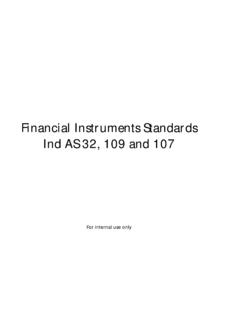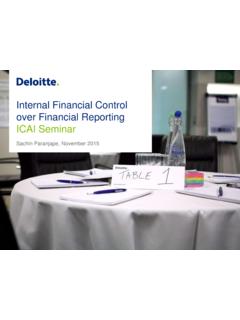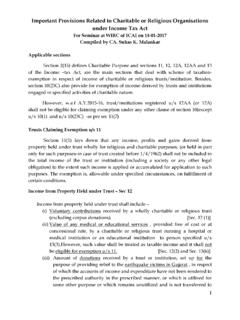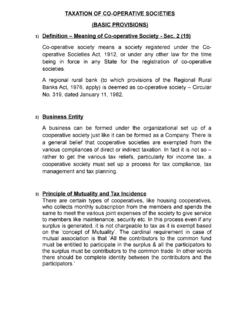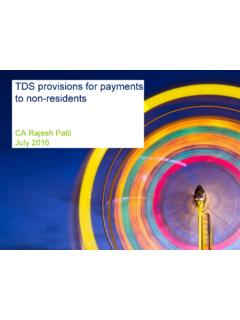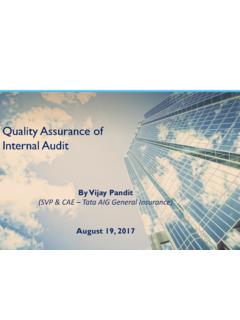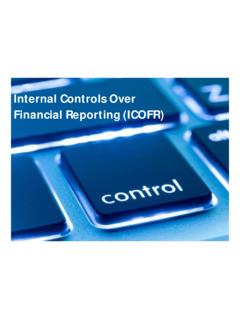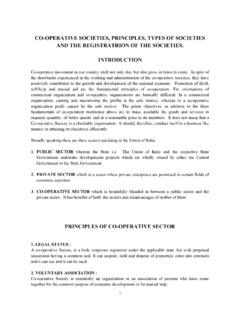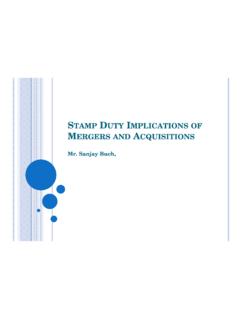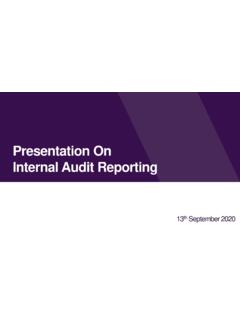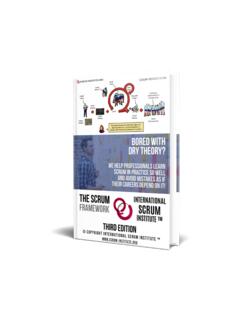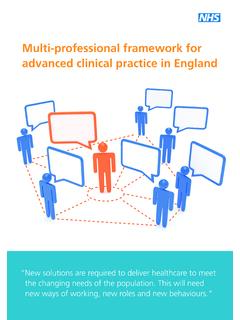Transcription of COSO Internal Control Framework Introductory training
1 coso Internal Control Framework Introductory training05 May 2020 Risk & InternalControl Basics coso Internal Control Framework Components and Principles Internal Control Assessment Internal Control Documentation InternalControl Indian Legal Perspective Internal Control Benefits & Limitations COVERAGE CONFIDENTIAL -NOT FOR CIRCULATION2 Risk & Internal Control BasicsCONFIDENTIAL -NOT FOR CIRCULATION3 RISK & Internal Control IN A COPMANYRisk What can go wrong? Ingeneral,riskisdefinedasthepossibilityt hataneventwilloccur,whichwillimpactanorg anization'sachievementofobjectives. BusinessRisk:Athreatthataneventoractionw illadverselyaffectanorganization ExampleInternal Control ?
2 Internalcontrolisaprocess,effectedbyanen tity sboardofdirectors,managementandotherpers onnel,designedtoprovidereasonableassuran ceoneffectivenessandefficiencyofoperatio ns, ExampleCONFIDENTIAL -NOT FOR CIRCULATION4 Internal Control PART OF OUR DAY TO DAY LIFERisk: Unauthorized accessControl: Password or Biometric accessRisk: Short circuit leading to fireControl: Circuit breakerRisk: High speed leading to accidentControl: BreaksRisk: Unauthorized activities or theft Control : CCTV camerasRisk: Incorrect choices Control : Online review mechanismRisk: Poor healthControl: Monitoring of daily stepsCONFIDENTIAL -NOT FOR CIRCULATION5 Absence of Control is not a Physical verification of stock is a Control to detect misappropriation or incorrect recording absence of it is not a riskRisk is relative to Rejection rate of 1% is not a risk if business objective already considers a 2% rejectionRisks magnitude is highly Stock differences of INR 50,000 may not be a risk at a company which has average stock levels of INR 50 Crores.
3 It becomes a risk for auditing of a warehouse which has average stock levels of INR 500,000 Risks are relative to Human resource related risk would be high and top priority for a IT company but may not be for a manufacturing companyRISK FURTHER CLARIFIEDCONFIDENTIAL -NOT FOR CIRCULATION6 TerminateReduceAcceptPass onTRAPDEAL WITH RISKS CLASSIC FOUR WAYSA cceptReduceTerminatePass onRareUnlikelyModerateCertainLikelyCatas trophicInsignificantModerateMajorMinorTh is helps the management and auditors to prioritize their attention and controls assessment as per risk ratings assigned to a risk Simply put, Control is what's employed to reduce the likelihood of something going -NOT FOR CIRCULATION7To manage the inherent industry challenges and risks, an Organization should have a Robust Integrated Internal Control thus need for implementing a widely accepted Control frameworkF R A M E W O R KCONFIDENTIAL -NOT FOR CIRCULATION8 coso Internal Control Framework The Components & The PrinciplesCONFIDENTIAL -NOT FOR CIRCULATION9 coso GLOBALLY ACCEPTED IC FRAMEWORKThe Committee of Sponsoring Organizations of the Treadway Commission ( coso )
4 Is a voluntary private sector organization dedicatedto improving the quality of financial reporting through business ethics, effective Internal controls, and corporate governance. Based on these principles, the coso Framework was developed as a foundation for establishing Internal Control systems and determining their effectiveness. Originally formed in 1985, coso is a joint initiative of five private sector organizations coso s Mission is To provide thought leadership through the development of comprehensive frameworks and guidance on enterprise risk management, Internal Control and fraud deterrence designed to improve organizational performance and governance and to reduce the extent of fraud in organizations.
5 coso s vision is to be a recognized thought leader in the global marketplace on the development of guidance in the areas of risk and Control which enable good organizational governance and reduction of MissionCOSO VisionCONFIDENTIAL -NOT FOR CIRCULATION10 coso Internal Control DEFINITIONI nternal Control is a process, effected by an entity s board of directors, management and other personnel, designed to provide reasonable assurance regarding the achievement of following objectives: Effectiveness and efficiency of operations, Reliability of financial reporting , Compliance with applicable laws and to the achievement of objectives in one or more separate but overlapping categories Operations, Reporting and Compliance A process consisting of ongoing tasks and activities A means to an end, not an end in itselfEffected by people not merely about policy and procedure manuals, systems and forms, but about people and the actions they take at every level of an organization to effect Internal controlAble to provide reasonable assurance but not absolute assurance.
6 To an entity s senior management and board of directorsAdaptable to the entity structure flexible in application for the entire entity or for a particular subsidiary, division, operating unit or business -NOT FOR CIRCULATION11 coso OBJECTIVES FURTHER ELABORATED Effectiveness & efficiency of entity s operations Operational & Financial performance Safeguardingassets against loss Compliance with entity policiesOPERATIONS GROWTH: Grow revenue by X% COST:Reduce COP by X% PROFITABILITY: EPS of INR XXX GEOGRAPHIC: Enter new market INFRASTRUCTURE:Upgrade ERP QUALITY: Minimal defects Internal & External Financial & Non-financial Reliability, Timeliness, Transparency Compliance with standards and entity policiesREPORTING Existence or occurrence Completeness Right and obligations Valuation or allocation Presentation and disclosure Internal reporting to management (MIS) and board (Quarterly)
7 Adherence to laws & regulations To which the entity is subject COMPLIANCE Applicability of laws, rules & regulations Country specific laws and regulations Compliance monitoring Evidence and documentationCONFIDENTIAL -NOT FOR CIRCULATION12 coso STRUCTURE An Internal Control structure is simply a different way of viewing the business -a perspective that focuses on doing the right things in the right way. Principle based, not rule based: The Framework does not prescribe controls to be selected, developed, and deployed Management judgement: Selection of controls is a function of management judgment based on factors unique to the entity Effectiveness and Efficiency of Operations Reliability of Financial Reporting Compliance with Applicable Laws and RegulationsCATEGORY OF BUSINESS OBJETIVES (TOP)FIVE COMPONENTS OF Internal CONTROLC ontrol Environment, Risk Assessment, Control Activities, Information and Communication and Monitoring ActivitiesMay be set for the entity as a whole or targeted to specific divisions, operating units, or functions (business process)HIERARCHY OF OBJECTIVES (SIDE)
8 CONFIDENTIAL -NOT FOR CIRCULATION13 coso Control ENVIRONMENTF oundation upon which other components are builtTone at the top Management attitude towards Internal controlCulture, history, management style, preferencesShared values of management and employeesPermeates the company from top to bottom Control Environment Risk Assessment Control Activities Information & Communication Monitoring PRINCIPLES 123 Demonstrate commitment to integrity and ethical valuesEstablishes standard of conduct; Evaluate adherence and addresses deviations45 BOD exercise oversight responsibilityApplies relevant expertise; Operates independently; Oversee Internal controlEstablishes structure, authority and responsibilityEstablishes reporting lines; Defines authorities and responsibilitiesDemonstrate commitment to competencePolicies & procedures; evaluate competence;attractdevelop & retain individuals; Succession planningEnforces accountabilityHolds individuals responsible for IC responsibilities;Establishes performance measures, incentives and rewardsand evaluates the same.
9 Considers excessive pressureCONFIDENTIAL -NOT FOR CIRCULATION14 coso RISK ASSESSMENTC ontrol Environment Risk Assessment Control Activities Information & Communication Monitoring Established objectives prior to risk identificationDetermine critical success factor (CSF) of each objectiveIdentify risks against each objective/ CSFL ikelihood and impact assessment of riskPRINCIPLES 678 Specify relevant objectivesOperational; Financial & Non-financial; External & Internal ;Compliance9 Identify and analyzes riskAcross entity against objectives; Internal & External; Involves appropriate levels; Determine risk responseAssesses fraud riskConsiders various types of frauds.
10 Assesses incentives, pressures, opportunities, attitude and rationalizationIdentify and analyzes significant changeAssesses changes in the external environment, business model and leadershipRisk identification at entity and process levelEntity Level: Competition, New Regulation, Natural disasterProcess Level: RM inventory, Sub-standard quality, Fund utilization CONFIDENTIAL -NOT FOR CIRCULATION15 coso Control ACTIVITIESC ontrol Environment Risk Assessment Control Activities Information & Communication Monitoring PRINCIPLES 101112 Select and develop Control activitiesIntegrates with risk management; Entity specific, Across all levels,Addresses Segregation of Duties Select and develop general controls over technologyTechnology general, infrastructure, security and maintenance controlsDeploy through policies and proceduresPolicies establishes what is expected and procedures put policies into action; Periodic review of policies & proceduresActions established by policies and proceduresTo manage risks Integrated with risk assessmentMechanisms to achieve organization s objective Entity Level Controls: Corporate wide, having pervasive effect on orga
